Warplanes: Box of Irregular Pencils
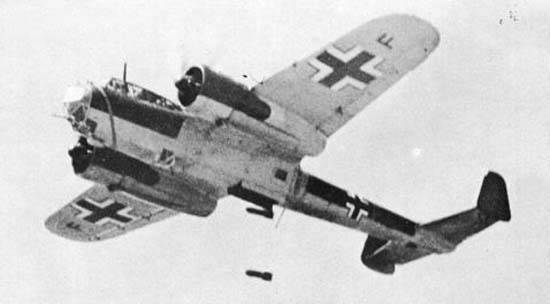
The idea of some kind of high-speed bomber, capable of easily getting away from a fighter, excited the designers from the very beginning of the 30s of the last century. Airplanes flew faster and faster, passenger monoplanes appeared, which easily gave out speeds higher than that of biplane fighters.
And it turned out that the idea is something vital: to remake a streamlined, with retractable landing gear, not disfigured by turrets and turrets, a passenger plane into a fast bomber. Who especially weapon and it is not necessary, so, one machine gun for shooting backwards, just in case.
In general, it worked out in the end. I'm talking about the Mosquito, which initially had no weapons at all. Only bombs. Let's just say, the top of the development of a high-speed bomber.
But before "Mosquito" there were still years, and years of peace, when aviation developed, let's say, calmly.
Our hero appeared when the Dornier firm screwed up a little. Lufthansa has ordered a high-speed mail plane with a passenger compartment for six seats from Dornier. The team headed by Claude Dornier was already world-famous, since the flying boats from "Dornier" confidently conquered the whole world.
But it wasn't a boat that was needed. A mail plane was needed.
Let's note right away that it didn't work out. No boat, no postman. And, despite the fact that the plane was very advanced, it did not fit the Lutfganza.
Two motors from BMW with 750 hp each. accelerated the aircraft to 330 km / h (this is 1934, if anything), the tests were successful, no shortcomings were identified. Nearly. In general, there was only one drawback: the inability to use the aircraft as a passenger. It is unlikely that in the world then it would be possible to find an aircraft less suited for civilian work. Two tiny salons (for 2 and 4 people), small doors for boarding and loading, everything is cramped and uncomfortable ...
Lufthansa performed several test flights and refused. Fairly, by the way. And that's it, in 1935 story Do.17 could have ended, but ... the gentlemen came from the Reichsluftfahrt-ministerium - RLM and said: "We take it!"
Under the terms of the Versailles Treaty, Germany could not build bombers. Absolutely. Therefore, every passenger plane was considered a potential bomb carrier. So it was with He.111, for example.
Do.17 was taken into development. The firm had to modify the car a little. The tail unit has become a spaced two-fin to improve the stability required by the bomber. The landing gear struts were moved to eliminate nodding during takeoff from bad airfields. It is not difficult, but Dornier gave an order for a series of 11 aircraft.
In October 1935, the Do.17 was shown at an exhibition, where the car was immediately nicknamed "Flying Pencil". The plane was indeed ... extravagant in appearance.
But the view is not the main thing. The main thing is how the plane flies. And for 1936, the Do.17 flew just perfect. On the Do.17, in the process of searching for the best result, Hispano-Suiza 12 Ykrs engines were installed. They developed a power of 775 hp. above sea level and 860 hp. at an altitude of 4000 meters.
With these engines, the aircraft's maximum speed reached 391 km / h. More than worthy, considering that peer fighters in countries - potential opponents flew about the same. The Dewuatin D.510 developed the same 390 km / h, and the Hawker Fury - 360 km / h.
Having received such results, they decided not to bother with defensive weapons and to do with one 7,92-mm machine gun for defense back-up from the radio operator, who now also became a shooter. And instead of the passenger compartment No. 2, a bomb bay was equipped.
The first production copies were assembled in the winter of 1936-37. They received the designation Do.17E-1 - bomber and Do.17F-1 - long-range reconnaissance aircraft. The latter was distinguished by the fact that it did not have a bomb sight, and instead of a bomb release mechanism in the bomb bay, an additional fuel tank and Rb 10/18, Rb 20/30 or Rb 50/30 cameras were installed. Both Do.17 modifications were powered by BMW VT 7,3 engines.
Immediately it was necessary to strengthen the defensive armament. Initially, it was clear that one machine gun was not enough. So it was decided to install two more MG.15s. The first was placed at the disposal of the radio operator so that he could shoot back and down through a specially made hatch in the cockpit floor, and the second machine gun was installed in the right half of the cockpit windshield. Both the pilot and the navigator could use this machine gun. The pilot used this MG.15 as a stationary course, and the navigator could remove the machine gun from the stoppers and have a small angle of fire at targets.
The bomb load was quite average for that time: 500 kg.
The set of bombs was very diverse and allowed to solve different tasks: 10 x 50 kg [SC.50), 4 x 100 kg (SD.100) or 2 x 250 kg (SD.250). It was possible to increase the bomb load to 800 kg (8 x SC.100) due to the fuel supply, that is, when using the aircraft as a close-range bomber for direct support of troops.
In 1937, the aircraft was demonstrated at an exhibition in Switzerland, where it made a splash. The Do.17 showed an official speed of 457 km / h, which was on a par with the best fighters, and the good ones simply remained behind the tail.
But here the Germans cheated a little and put up an experimental model equipped with DV.600 motors for measurement. And the usual Do.17M with engines from BMW at the same exhibition flew at a speed of 360 km / h.
But it became clear to everyone on this example that the Germans had a new fast plane, and even with a clear potential for further development.
And the Do.17 went to the combat units of the Luftwaffe. And at first the preference was given to the Do.17F-1, a reconnaissance modification, since the frankly outdated Heinkel No.70 had to be changed ten years ago.
Naturally, at the beginning of the Spanish Civil War, the Germans could not resist the temptation of checking the aircraft in action. General Franco, among others, was sent 4 Do.17E-1 as part of the Condor Legion. In the summer of 1937, the Do.17 took part in the bombing of the infamous Guernica and Durango, in northern Spain.
In addition to them, the Francoists received 15 Do.17F-1 scouts.
The first Do.17 in Spain was shot down over Bilbao on 18 April 1937. That is, almost immediately upon arrival. It was shot down by Republican Felippe del Riovi in an I-15 fighter. However, you should not immediately draw conclusions, here Felipe was rather very lucky, because the Do.17 walked away from the biplane fighters very calmly, and the weapons made it possible at least to fend off the opponents.
It got worse when the Republicans got at their disposal I-16 monoplanes, which were not inferior in speed to the Do.17. It cannot be said that the advantage had dissipated, but the very presence of the Chatos constrained the Pencils, since there was no longer any confidence in their superiority.
The Spanish Francoists gave the Do.17 their nickname - "Bacalaos": "Cod".
It is worth noting separately that the Do.17 was a little off track. Still, speed is a very good help. It is not surprising that in the attack on Valencia, the Francoists lost only 2 Do.17 aircraft, both from anti-aircraft fire.
The Spanish Civil War exposed all the strengths and weaknesses of the Do.17. The very first experience of its combat use showed that the aircraft's speed capabilities are not high enough. The Do.17 confidently broke away only from the outdated biplane fighters produced in the first half of the 30s. But in the air fleets a change of generations has already begun in different countries, and instead of biplanes, monoplanes with very high speed characteristics began to enter service. The British Hurricane of the first series had a speed almost 100 km / h higher than the Do.17.
There was an option to modernize the aircraft by installing the already proven engines from Daimler-Benz DB.600. But alas, these motors were needed for the Messerschmitt fighters, which also went into series.
Therefore, the Dornier designers had to look for other engines for the new aircraft modification. We stopped at the brainchild of a BMW air-cooled Bramo 323 A-1 "Fafnir" with a capacity of 900 hp. takeoff and 1000 hp at an altitude of 3100 m.
A new engine was also chosen for the scout: BMW 132 N. This engine developed only 865 hp. on takeoff and 665 hp. at an altitude of 4500 m, but it was lighter and more economical, which is more useful for a scout.
So at the beginning of 1938, the new Do.17M bombers and Do.17P reconnaissance aircraft went into production.
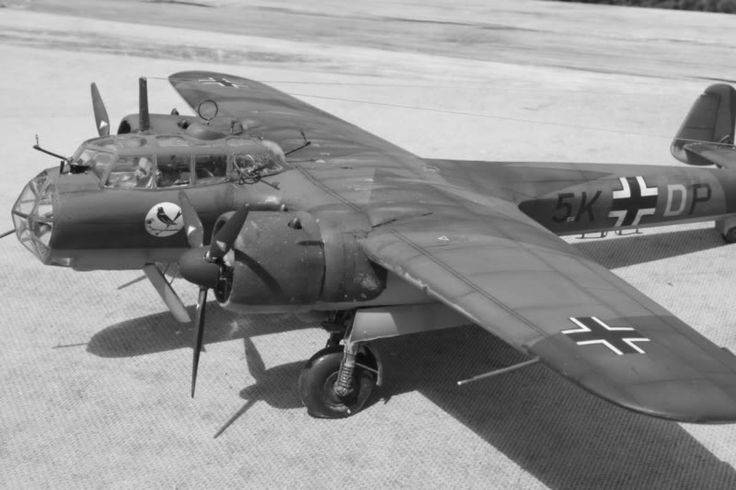
New engines have brought changes. The speed increased, the Do.17M reached 415 km / h at an altitude of 4700 m, and the Do.17P - 410 km / h at an altitude of 4000 m. The new engines made it possible to increase the bomb load of the Do.17M to 1000 kg. On some aircraft from the latest series, the fourth MG.15 machine gun appeared, which passed through the nasal glazing of the navigator's cockpit and served to protect against front-bottom attacks.
With the outbreak of World War II, aircraft of all modifications took part in it. At the time of the outbreak of hostilities, the Luftwaffe had more than 300 bombers and 180 Do.17 reconnaissance aircraft. In fact, a third of the total.
The fighting in Poland and France provided Dornier with import orders. The planes wanted (and acquired) Bulgaria.
The experience of hostilities in Spain led the German leadership to the conclusion that it was necessary to strengthen the defensive armament of bombers, as well as the concentration of these weapons and the entire crew of the aircraft in one place.
This is how the concept "Waffenkopf" - "Battle Head" appeared, which defined the appearance of all German bombers until the end of the war.
The idea was quite good: the gunners and the pilot, being in the same cockpit, can better coordinate their actions, and secondly, all crew members can psychologically support each other and directly help in battle.
On most bombers of that time, the arrows were in the tail of the aircraft, after the bomb bay. That is, outside the cockpit. Like the British Whitley or Soviet SB or DB-3.
As soon as one shooter in his cell was disabled, the plane was defenseless. The German strategy proposed a trench instead of a trench, that is, defensive fire continued in any direction as long as at least one of the crew was combat-ready.
The Germans believed that this was how the resistance of the aircraft could be increased. The fact that the Americans did about the same in their "fortresses" later only confirms the correctness of their calculations.
In accordance with the new concept, the Dornier designers have developed a new cab. The visibility of all crew members was significantly improved, even somewhat to the detriment of aerodynamics. Instead of a door in the side of the fuselage, which the aircraft inherited from a passenger ancestor, a hatch was made in the bottom, which made it easier to leave the aircraft. The crew of the aircraft with the new cockpit increased to four people: a pilot, a navigator-bombardier, a radio operator and a lower gunner.
There was a plane with a crew of five, a special Do.17U-1 with DB.600A engines. These aircraft were used for reconnaissance and guidance, the fifth person was another radio operator, who was responsible specifically for contact with submarines or surface ships.
In general, despite the fact that both pilots and technical staff liked the plane, clouds began to gather over the Do.17.
The fact is that the Do.17 was very much inferior in the number of bomb loads of the He.111. And in terms of accuracy, the diving Ju.88 was more preferable. And in speed the brainchild of "Junkers" was better. So it is not surprising that the Luftwaffe ordered the termination of the production of Dornier in favor of Junkers and Heinkel. Pure competition and nothing personal. The strongest usually wins.
Meanwhile, long before the start of Operation Sea Lion or the Battle of Britain, it was the Do.17 crews who set up unpleasant moments for British ships and ships in the English Channel, calmly flying into British territory and striking infrastructure facilities.
About 300 bombers or scouts Do.17 and Do.215 took part in the "Battle of Britain".
By the end of August 1941, it became clear that the British Air Force had failed to suppress. It turned out that the Luftwaffe did not have sufficient forces and means for this, and from October 1941 the Luftwaffe command decided to abandon daytime raids, switching to night raids in small groups. First of all, Do 17 bombers were transferred to the category of "night lights".
While the Do.17 had small chances to escape or fight off the Hurricane during the day, the Spitfire did not give such chances at all. Well, the bomb load ceased to suit the Luftwaffe leadership. A thousand kilograms over such distances seemed insignificant in comparison with the losses suffered by the Luftwaffe.
The units began replacing the Do.17Z with the Junkers Ju.88. The remaining in the ranks "Dornier" were transferred to clearly secondary directions such as Crete and the Balkans.
On April 6, 1941, German aircraft bombed Belgrade. German troops invaded Yugoslavia and Greece. In the Balkan operation, the 4th German air fleet was involved, which included all the remaining Do.17 in the ranks.
And if in "Battle of Britain" Do.17 looked weak, then the armies of Greece and Yugoslavia did not differ in the presence of a large number of aircraft of new types, and therefore in the skies over the Balkans Do.17 felt more than confident.
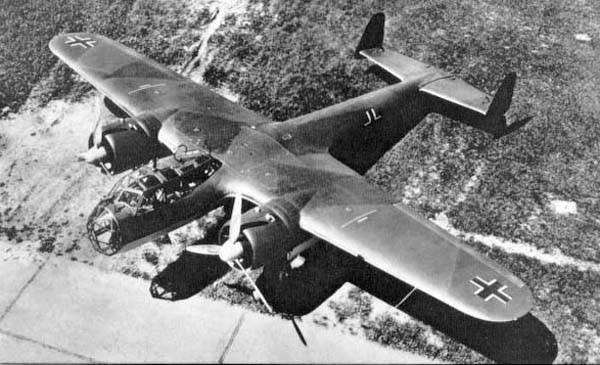
On April 17, 1941, Yugoslavia capitulated. Then in April Do.17 bombed the British from Greece, which also surrendered. The last stronghold remained - the island of Crete. During the fighting in Yugoslavia and Greece, the Luftwaffe lost twenty-nine Do.17.
The British fleet dominated the Mediterranean, but the Luftwaffe decided to prove that air was more important, and the Germans did it.
The Do.17 took part in all operations in the region, striking British ships and providing reconnaissance.
Crete was eventually taken in an unprecedented airborne operation, and the Do.17s were noted in May by effectively saving a German landing convoy from defeat, inflicting serious damage on the British light cruisers Naiad and Carlisle that attacked the convoy.
And, of course, Colonel Rovel's Do.17 special unit provided the Wehrmacht with the most detailed aerial photographs of the Soviet border areas in 1941. In general, according to the documents, the first Do.17 flights over the territory of the USSR began in 1940, in the fall.
Despite the merits of the Rovel group, Do.17's career was drawing to a close. On the Eastern Front, the last groups were withdrawn for rearmament at the end of 1941. The new Do.217E and Ju.88 finally replaced the Do.17.
The replacements, however, did not concern the Do.17P and Do.17Z-3 scouts, which remained the eyes of the ground forces.
In addition to the German Luftwaffe, the Do.17 was also used by the Allies. A squadron of Croatian Do.17 bombers operated on the Eastern Front.
Croats fought until 1943, when they also went to rearmament.
According to reports, during the entire campaign on the Eastern Front, the Croats flew 1247 combat missions, destroyed 245 tanks, 581 trucks, 307 artillery pieces and a large number of enemy manpower. Own losses amounted to 5 Do.17Z bombers and 20 crew members.
Of the figures presented by Rudel's Croatian students, the first is believed. Well, in the last two. With regard to everything in between - sorry, not really.
The Do.17 fought with the Finnish Air Force. In November 1941, Goering donated 15 aircraft and 300 tons of bombs to the Finns.
Only 5 cars survived the war. The rest were shot down by Soviet and Finnish anti-aircraft gunners, Soviet fighters and destroyed by their own crews. The Finns also had successful operations, but since the number of aircraft was small, they did not have a particular impact on the situation in general.
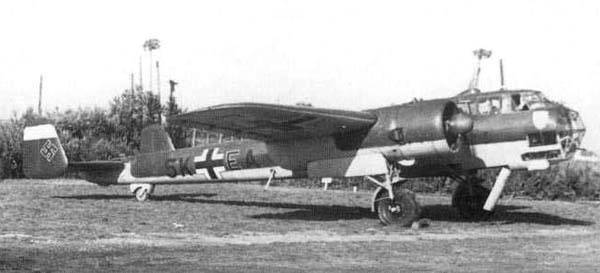
But one of the Finnish survivors of the war, Do.17, turned out to be a long-liver. The Do.17Z-3, numbered DN-58, was used for aerial photography after the war and made its last flight on 13 September 1948.
During the war, several interesting modifications of the aircraft were created.
Do.17Z-5, a rescue aircraft, it was supposed to be used to search and rescue aircraft or ships shot down over the sea. Carried on board a load of inflatable rafts.
Do.17Z-6 and 10, night fighters. The modification was designed to combat British bombers. The aforementioned modest dimensions of the cockpit did not allow installation inside the radar, so the aircraft was equipped with infrared search equipment for enemy aircraft and a hanging container with two 20-mm MG-FF cannons and four 7,92-mm machine guns.
A total of 2 Do.139 aircraft of all modifications were manufactured.
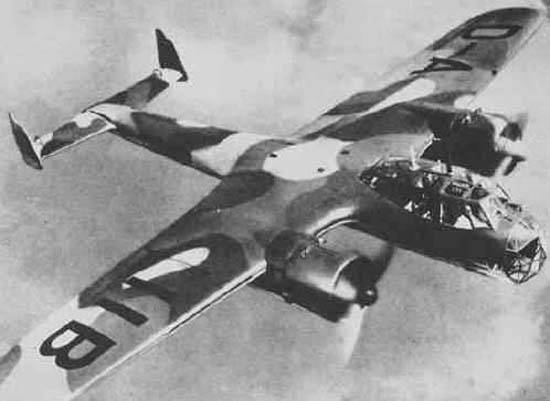
LTH Do.17z-2:
Wingspan, m: 18,00.
Length, m: 15,80.
Height, m: 4,50.
Wing area m: 53,30.
Weight, kg:
- empty aircraft: 5 200;
- normal take-off: 8;
- maximum take-off: 8 850.
Engines: 2 х BMW Bramo-З2ЗР "Fafnir" х 1 hp
Maximum speed km / h:
- near the ground: 342;
- at height: 410.
Cruising speed, km / h:
- near the ground: 270;
- at height: 300.
Practical range, km: 1150.
Rate of climb, m / min: 330.
Practical ceiling, m: 8 200.
Crew, person: 4.
Armament:
- two fixed 7,69 mm MG-15 machine guns forward;
- two MG-15 in the side windows;
- two MG-15s firing back above and below the fuselage.
Bomb load: 1000 kg in a combination of 20 bombs of 50 kg or 4 bombs of 250 kg.
A good aircraft with excellent flight characteristics for its time, but completely outdated for war. Reliability and ease of maintenance and piloting were negated by clearly weak weapons and excessive versatility.
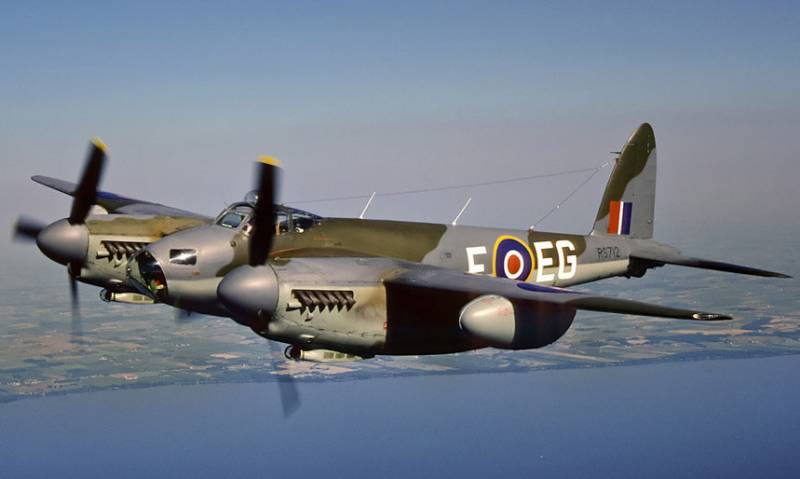
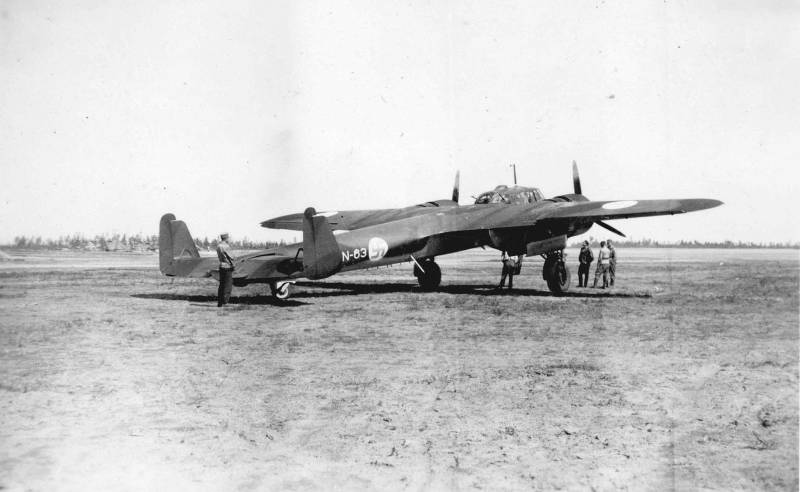
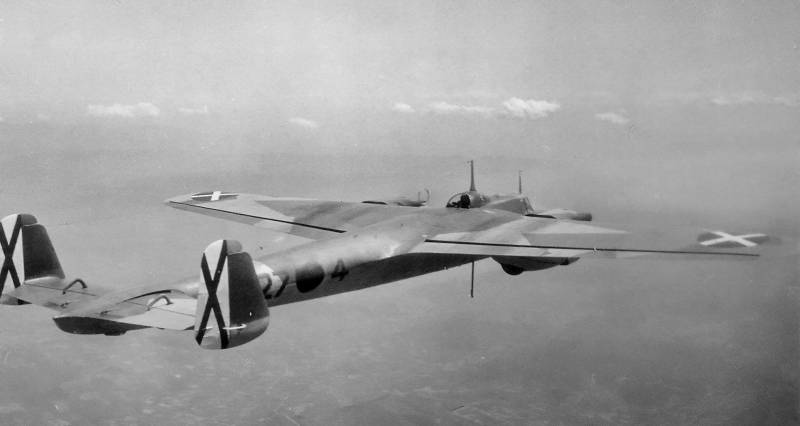
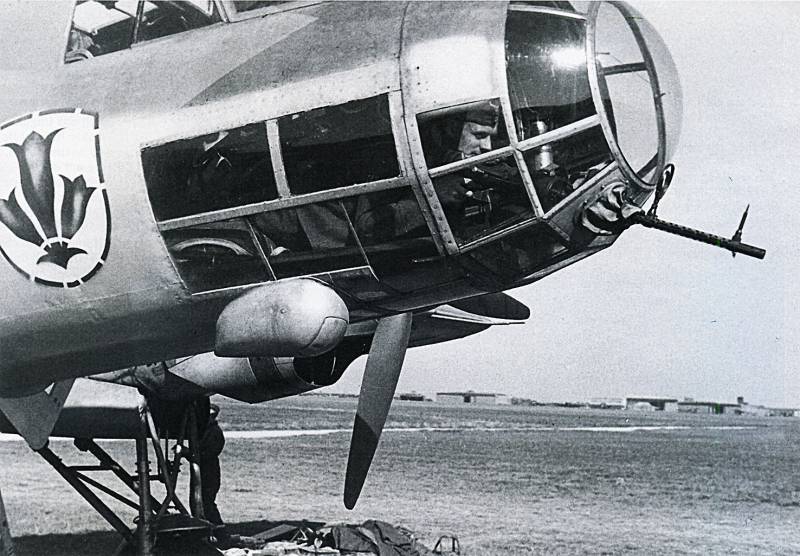
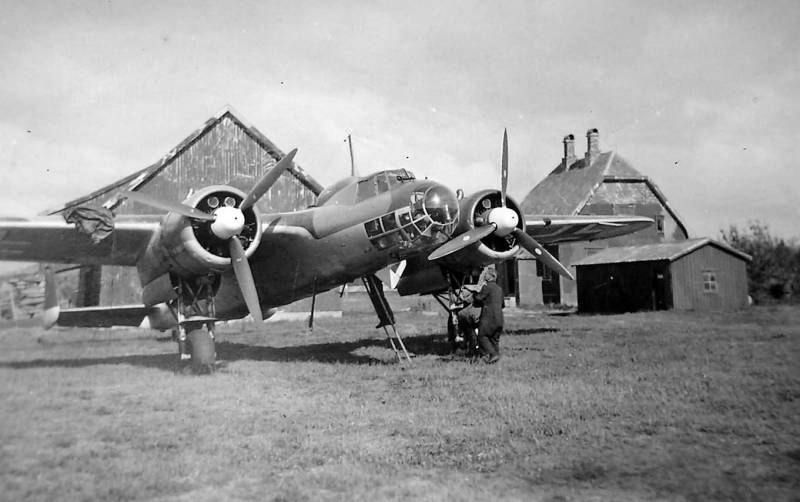
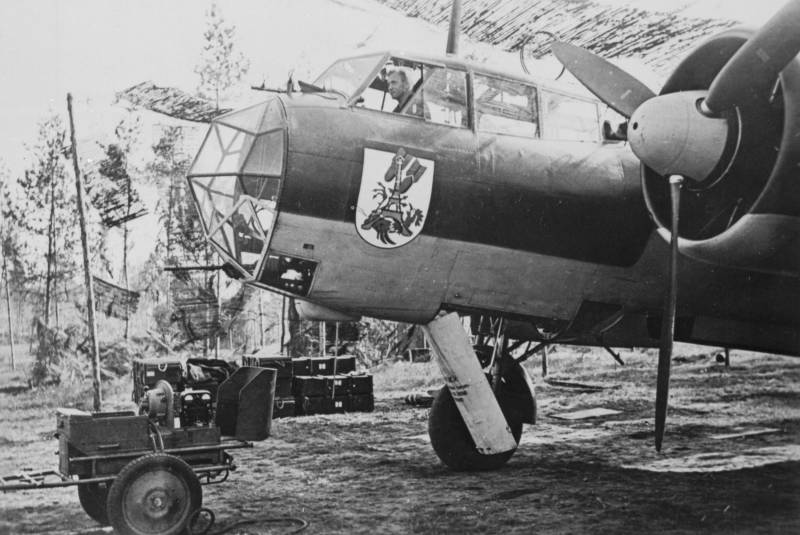
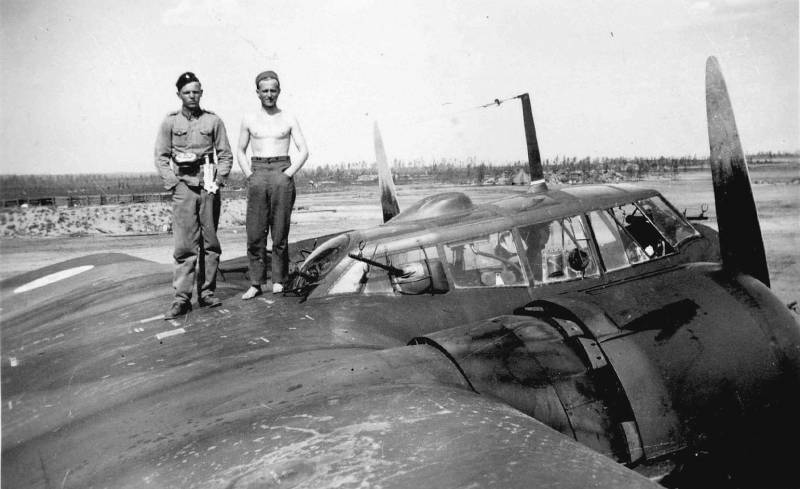
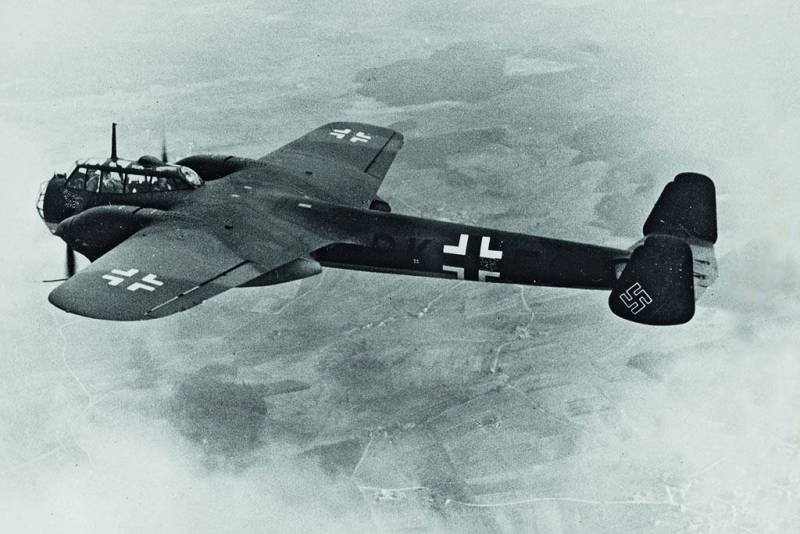
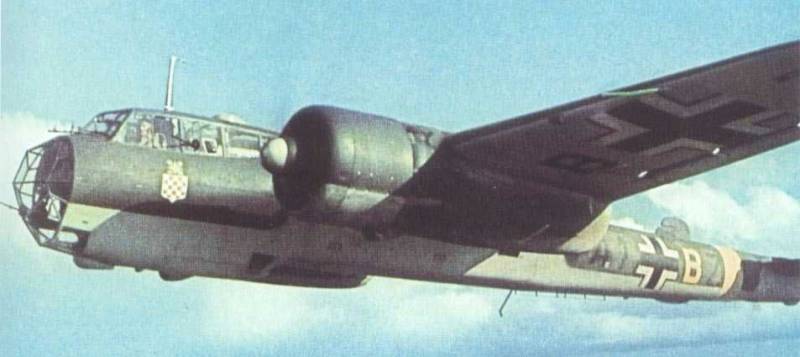
Information